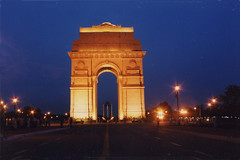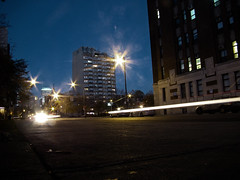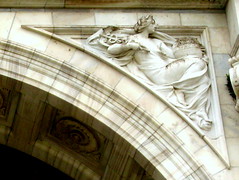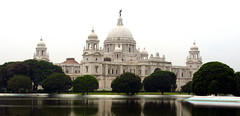In the good old days, even amateur photographers used to take their subjects near the window or a source of light, or else put their cameras on tripod. Simply to get a shot with a reasonably good light. But now? what do we do? Switch the flash on, and click! To hell with light, to darn with shadows!
But there's one thing we are forgetting here. "Our eyes rely on shadows to recognize shapes." There is no useful shadow cues if the light source and the lens is coming from the same angle. So guys, don't point and shoot without thinking, or else you have to be happy with the "deer in the spotlight" look of your photo.
 So does that mean you have to throw away the flash that came with your camera, or never use it? No! Remember the fill flash? It serves really well to minimize dark shadows in harsh sunlight. And not only that, accessory flash can be a useful tool, if used correctly. There's an array of strategies to use flash effectively.
So does that mean you have to throw away the flash that came with your camera, or never use it? No! Remember the fill flash? It serves really well to minimize dark shadows in harsh sunlight. And not only that, accessory flash can be a useful tool, if used correctly. There's an array of strategies to use flash effectively. Another good option is to get a dual flash. In this case, the main flash fires to the ceiling. Creating an illusion of light coming from the top. And a second low-power flash fires straight ahead to compensate the dark shadows forming otherwise.
Another good option is to get a dual flash. In this case, the main flash fires to the ceiling. Creating an illusion of light coming from the top. And a second low-power flash fires straight ahead to compensate the dark shadows forming otherwise.Flash cool tip: wrap a colored cellophane sheet onto the flash to get some tint on your photos, if you want them to be cooler, use blue, yellow for a golden light, and red for a warm tint!




 with f/11 aperture. At this long an exposure, you can never hold the camera in your hand, you'll get shaky pictures. So, tripod is a must.
with f/11 aperture. At this long an exposure, you can never hold the camera in your hand, you'll get shaky pictures. So, tripod is a must. 











